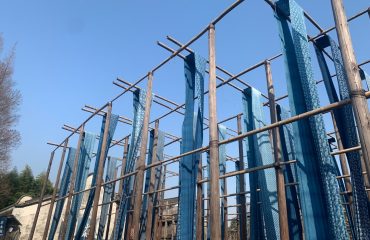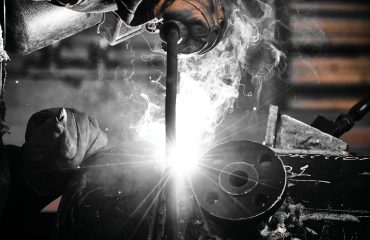Stainless steel. The name itself conjures images of durability, elegance, and lasting quality. But with so many different types and grades available, navigating the world of stainless steel products can feel overwhelming. This comprehensive guide aims to demystify stainless steel, helping you understand its various forms, applications, and how to best care for your stainless steel possessions.
Understanding Stainless Steel Grades and Their Properties
The key to understanding stainless steel lies in its composition. Different grades are created by varying the percentages of chromium, nickel, molybdenum, and other alloying elements. This variation directly impacts the steel’s properties, including corrosion resistance, strength, and workability. Here’s a breakdown of some common grades:
- 304 Stainless Steel (18/8): This is the most common grade, offering excellent corrosion resistance and good strength. It’s widely used in kitchenware, appliances, and architectural applications.
- 316 Stainless Steel (18/10): Containing higher levels of molybdenum, 316 stainless steel boasts superior resistance to corrosion, particularly in harsh environments like marine settings. It’s often found in medical instruments and outdoor furniture.
- 430 Stainless Steel: A less expensive option, 430 stainless steel offers good corrosion resistance but is less strong than 304 or 316. It’s commonly used in automotive parts and some kitchen appliances.
- 410 Stainless Steel: Known for its high strength and hardness, 410 stainless steel is often used in cutlery and tools where durability is paramount. However, its corrosion resistance is lower than that of 304 and 316.
Choosing the right grade depends entirely on the intended application. Consider the environment the product will be exposed to and the required level of strength and corrosion resistance.
Common Applications of Stainless Steel Products
The versatility of stainless steel makes it suitable for a vast array of applications, spanning various industries and everyday life. Here are some notable examples:
- Kitchenware: Pots, pans, cutlery, sinks, and appliances are frequently made from stainless steel due to its durability, ease of cleaning, and resistance to staining.
- Medical Instruments: Its biocompatibility and resistance to corrosion make stainless steel ideal for surgical instruments, implants, and other medical devices.
- Architectural and Construction: Stainless steel is used in building facades, roofing, railings, and structural components for its strength, longevity, and aesthetic appeal.
- Automotive Industry: Exhaust systems, body panels, and other components often utilize stainless steel for its corrosion resistance and high strength-to-weight ratio.
- Food Processing Equipment: Stainless steel’s hygienic properties make it a preferred material for food processing equipment, ensuring safety and preventing contamination.
This is just a glimpse into the wide range of applications for stainless steel. Its adaptability and superior properties continue to drive its use across numerous sectors.
Maintaining and Cleaning Your Stainless Steel Products
Proper care ensures your stainless steel products maintain their beauty and functionality for years to come. Here are some essential cleaning and maintenance tips:
- Regular Cleaning: Wipe down surfaces with a soft cloth and mild detergent after each use. Avoid abrasive cleaners or scouring pads, which can scratch the surface.
- Dealing with Stains: Most stains can be removed with a paste of baking soda and water. For stubborn stains, consider a specialized stainless steel cleaner.
- Preventing Water Spots: Dry your stainless steel surfaces thoroughly after cleaning to prevent water spots. A microfiber cloth works best.
- Avoiding Harsh Chemicals: Avoid using bleach, ammonia, or other harsh chemicals, as they can damage the finish.
Following these simple steps will help preserve the appearance and longevity of your stainless steel investments.
Choosing the Right Stainless Steel Product for Your Needs
With the vast array of stainless steel products available, selecting the right one requires careful consideration of several factors:
- Intended Use: Determine the primary function of the product and the environment it will be used in. This will help you select the appropriate grade of stainless steel.
- Durability Requirements: Consider the level of strength and resistance to wear and tear needed for the product’s intended use.
- Aesthetic Preferences: Stainless steel comes in various finishes, from brushed to polished. Choose a finish that complements your style and the overall design.
- Budget: Different grades of stainless steel vary in price. Balance your needs with your budget to find the most cost-effective solution.
By carefully evaluating these factors, you can make an informed decision and choose the perfect stainless steel product to meet your specific requirements.
The Future of Stainless Steel: Innovations and Trends
The world of stainless steel is constantly evolving. Research and development are leading to innovations in both material composition and manufacturing processes. Some key trends include:
- Improved Corrosion Resistance: Researchers are constantly developing new alloys with even greater resistance to corrosion, expanding the applications of stainless steel in challenging environments.
- Sustainable Production Methods: The focus on sustainability is driving the development of more environmentally friendly production methods for stainless steel.
- Advanced Manufacturing Techniques: Techniques like 3D printing are opening up new possibilities for creating complex and customized stainless steel products.
- Lightweight Stainless Steels: The development of lighter-weight stainless steels is crucial for applications where weight reduction is essential, such as in the aerospace industry.
These innovations promise to further enhance the versatility and appeal of stainless steel, solidifying its position as a leading material for countless applications.
This comprehensive guide provides a foundation for understanding and appreciating the world of stainless steel products. Remember to consider the factors discussed above when making your purchasing decisions to ensure you get the best possible product for your needs.




